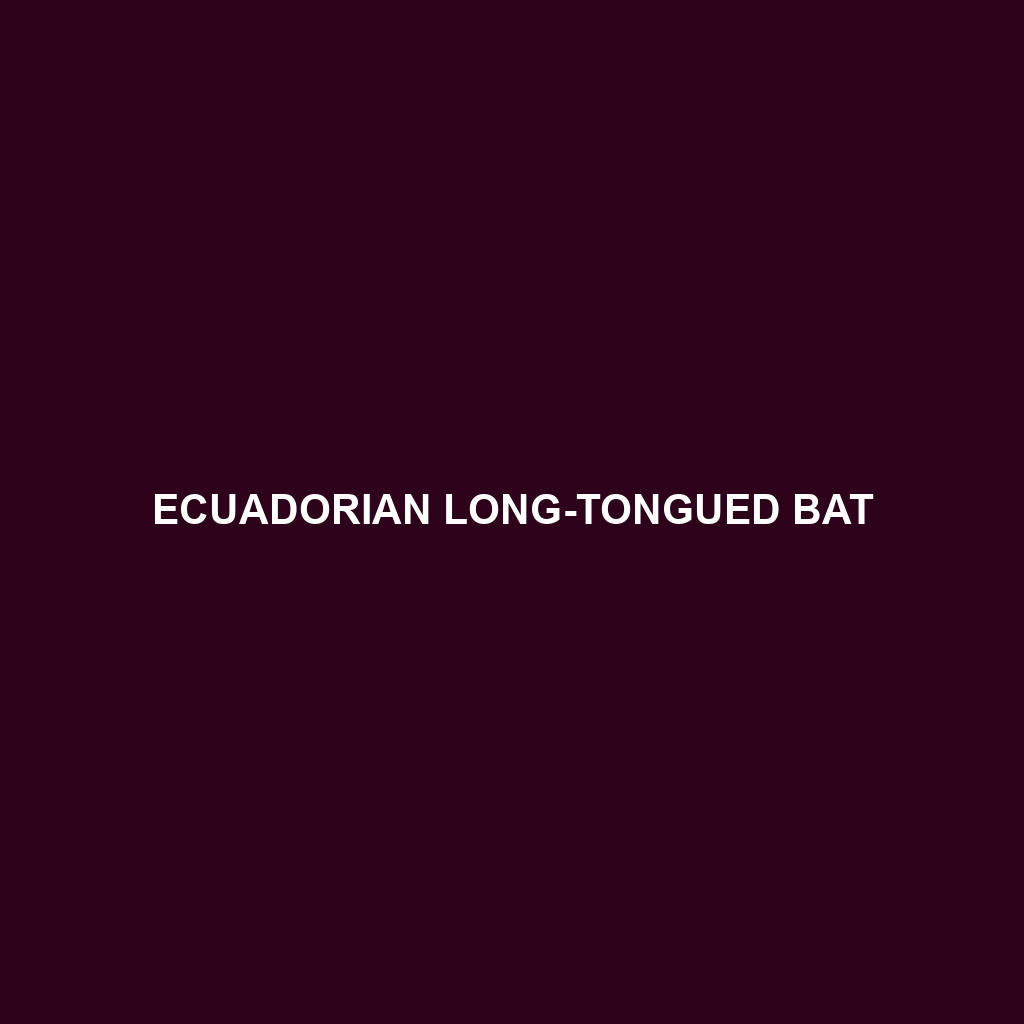Pallas’s Long-tongued Bat
Common Name: Pallas’s Long-tongued Bat
Scientific Name: Glossophaga soricina
Habitat
Pallas’s Long-tongued Bat is primarily found in the tropical and subtropical regions of Central and South America. These bats thrive in various environments, including tropical rainforests, cloud forests, and areas adjacent to flower-rich landscapes. They are often spotted in regions such as Brazil, Colombia, and eastern Peru, favoring habitats where nectar-producing plants are abundant.
Physical Characteristics
This medium-sized bat typically measures between 6 to 8 inches in length, with a wingspan reaching up to 10 inches. Pallas’s Long-tongued Bat features a distinctive long, narrow snout that allows it to access nectar deep within flowers. Its fur is generally a soft gray-brown, with lighter underparts. One of its most notable characteristics is its elongated tongue, which can be extended to reach nectar, making it a vital pollinator in its ecosystem.
Behavior
Pallas’s Long-tongued Bat is primarily nocturnal, exhibiting active foraging behaviors at dusk and throughout the night. These bats are known for their impressive flying abilities, allowing them to maneuver adeptly between flowers. Their social behavior often includes roosting in small groups during the day, typically in tree hollows or caves. Additionally, they are known to utilize echolocation for navigation and locating food sources.
Diet
The diet of Pallas’s Long-tongued Bat consists mainly of nectar from various flowering plants, which they obtain through their specialized long tongues. Their feeding habits also include the consumption of pollen and, occasionally, small insects. This nectarivorous diet makes them essential pollinators in their habitats, aiding in the reproduction of several flowering plant species.
Reproduction
Pallas’s Long-tongued Bat typically breeds during the rainy season, which varies by region but often occurs between November and March. Females usually give birth to a single pup after a gestation period of approximately 10 to 12 weeks. These pups are born blind and helpless, relying on their mothers for nourishment and warmth during their early weeks. Maternal care is crucial, as mothers can often be seen caring for their young while foraging for food.
Conservation Status
The conservation status of Pallas’s Long-tongued Bat is currently classified as “Least Concern” by the IUCN Red List, indicating it is not immediately threatened. However, habitat loss due to deforestation and agricultural expansion poses significant risks to their populations, making conservation efforts necessary to maintain their habitats and ensure their longevity.
Interesting Facts
One fascinating fact about Pallas’s Long-tongued Bat is its role as a pollinator for the agave plant, which is crucial for tequila production. Additionally, these bats can often be seen visiting thousands of flowers in a single night, showcasing their vital contribution to floral diversity.
Role in Ecosystem
Pallas’s Long-tongued Bat plays a critical role in its ecosystem as both a pollinator and a seed disperser. Their feeding activities facilitate the reproduction of many plant species, thereby supporting biodiversity. By dispersing seeds, they help in maintaining healthy forest ecosystems, making them integral to the ecological balance of their habitats.
